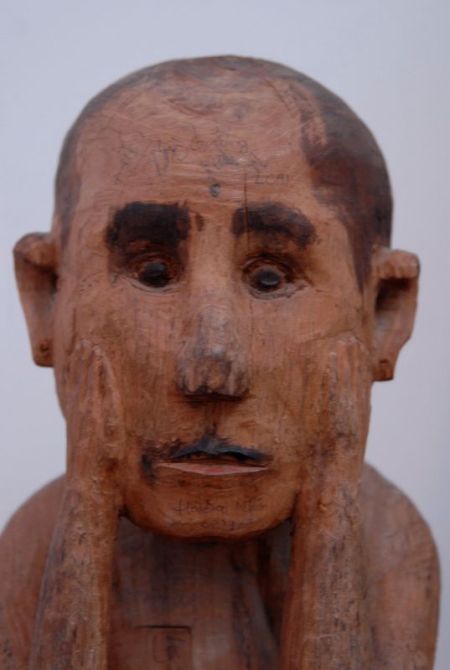Mr.Tuk Tuk
A metallic Cambodian loudspeaker spoke, Now here this, The tuk-tuk is leaving in five minutes, Departing for points unknown, A massive short celestial event known as YOUR LIFE will depart in five minutes.
You are advised to assemble all the necessary documents, certified seals of approval, water, invisible guide books, sunscreen, funny money and so on...you will visit the Mind-At-Large on your short, fast, easy tour.
Bring your life with you, And a glossy greasy Laughing Planet guidebook with heavily creased pages. If you attempt to read while moving at the speed of light or 186,000 miles per second you will discover a new sense of perspective.
You may be surprised or traumatized depending on your perception to realize your experience at Angkor is not about seeing the temples. You will DO Angkor. Get the t-shirt. Check it off your list. Less is more.
Please conclude all private and group discussions, disagreements or arguments with your fellow travelers to ascertain your destination. Talking time is finished.
The tuk-tuk driver has his helmet and vest. His vest has a green four-digit number. If he tries to bring you into Angkor without the vest he faces massive surprises. For starters he will lose his job and have to return to his small distant isolated village where he will plant rice and provoke white cows with socialist Marxist production tools to pull the plow through mud.
The biggest dream for many young Cambodian men is to become a tuk-tuk driver. If he loses his tuk-tuk job his family will starve to death. This is a common problem here. Death by starvation. If you survive you win.
If he dies you will be held in escrow. (Old French; a scrap, a roll of parchment)
A tuk-tuk river driver has an easy job. An easy life. He drives you to a temple and crashes out. You feed him. He takes you back where you started. He makes $15-20 for the day.
The average Cambodian’s daily wage is $2.03.
Not a single woman in Siem Reap is a tuk-tuk driver. There are 3-4 women tuk-tuk drivers in Phnom Penh. They are as rare as clean drinking water, sanitation, hospitals and schools. Women work in massage parlors, restaurants and guest houses. They are the guest and you are the house.
Your house has many symbolic rooms: the basement is where your unconscious lives breaths-laughs and dances where it reveals inner vision. Clean all your rooms. Take out the garbage. Explore your diverse rooms.
Don’t sweat the small stuff, it’s all small stuff. You are the housekeeper of perception, sensation, form, symbols and nothing.
A woman doesn't work as a tuk-tuk driver because:
-it's too dangerous
-it's inappropriate
-it's foolish
-they lack the education, intelligence, drive, initiative
-they haven't broken free of deeply ingrained social and cultural stereotypes: a woman's place is in the home, producing offspring, taking care of kids and the elderly, washing, cleaning, and cooking
-their family will kill them with love and affection
Thirty years ago a Cambodian woman was lucky to finish 9th grade. She married and stayed at home. She produced children in assembly line operations with the highest quality control standards known to modern medicine and umbilical chords.
It will take another generation before women become tuk-tuk drivers. Tisk, tisk, tuk, tuk.
Your mother was appointed to have you.








 Share Article
Share Article 






